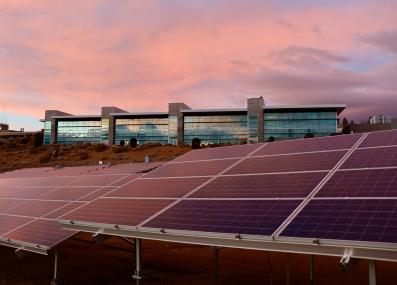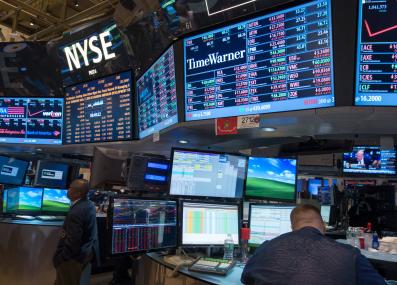New to Climate Change?
Scope 1, 2 and 3 Emissions
Scopes 1, 2 and 3 are ways of classifying climate-warming greenhouse gas emissions. When companies and other organizations make plans to control their climate pollution, many start by sorting their activities into these three categories. And because this system is used so widely, understanding it can help all of us read these climate plans clearly and judge how thorough and ambitious they are.
The three scopes and what they cover
Scope 1 emissions are greenhouse gases a company puts into the atmosphere with its own property. For instance, when a company burns oil or gas to heat its buildings, these heating fuels create greenhouse gases. Those emissions belong in scope 1.
Scope 2 emissions come from electricity the company buys from the electric grid. These are “indirect” emissions that happen at distant power plants. Still, as with scope 1 emissions, the company is clearly and solely responsible for them: if it used less electricity, there would be less demand for coal, gas and other climate-polluting energy sources.
Scope 3 emissions include all other indirect sources of greenhouse gases from the company’s operations. These might be connected with the day-to-day running of the company: for instance, if a company’s employees drive to work, the gasoline they burn falls under scope 3. They might be connected to materials and supplies the company buys, like when a car company buys steel: manufacturing that steel creates some greenhouse gases. Or the emissions might come from finished products, like when a car company sells a car, which someone then fills with gas, creating more scope 3 emissions.
Slippery scope 3
Scope 3 emissions sometimes raise knotty questions about who is “really” responsible. For example, a car can create scope 3 emissions for the driver’s employer, and the company that made the car, and the oil company that extracted the oil to be refined into gasoline. Is this a sort of double (or triple) counting?
Yes, but the point of counting these emissions is to outline the many ways companies can make a difference on climate change. The driver’s employer can lower emissions by making it easier for its employees to walk or take public transit to work. The car manufacturer can lower emissions by making its cars more energy-efficient, or by making electric vehicles instead. Even the oil company could explore alternative fuels that produce less climate pollution when burned. All of them have power to put fewer greenhouse gases in the air.
Another challenge of scope 3 is measurement. Imagine again our car company buying steel. It doesn’t run the steel foundry: how can it be sure how much climate pollution is created for each ton of steel it buys?
There are two main ways companies solve this. One is “environmentally extended input-output analysis,” which sounds complicated but simply means that every type of product and service—steel, paper, waste disposal, air travel—is given an average value for the emissions it creates per dollar spent. In the U.S., the Environmental Protection Agency keeps a set of computer models for just this purpose.
This is helpful when companies plan to deal with scope 3 emissions by buying less stuff, like an office going paperless. But for our car company, it’s not the right approach: the steel is absolutely needed to build the cars. This company would be better served with “process-based lifecycle assessment,” engaging with all its suppliers from raw ore to ready-to-use steel to learn how the steel is made and how much climate pollution is created at each step, calculated for each ton of steel instead of each dollar. This strategy takes much more work and data, but in the end, the company can choose less polluting steel, and even work with its suppliers to improve their processes.
The savvy climate plan reader
Scopes 1, 2 and 3 were invented as part of the “Greenhouse Gas Protocol,” a joint effort by the World Resources Institute and the World Business Council for Sustainable Development to create worldwide standards for measuring greenhouse gas emissions. This project published its first set of corporate standards in 2001, introducing scope 1, 2 and 3 emissions to the world.
Today, many large companies have or are developing targets for reducing their greenhouse gas emissions—often to “net zero”—and associated climate mitigation plans. Most of these plans use the Greenhouse Gas Protocol.
Once you know about scope 1, 2 and 3 emissions, these targets and climate plans become easier to read and judge. Almost all plans pledge to cut scope 1 and 2 emissions. Does the plan also lay out what those emissions are today? Is it specific about its targets: how much emissions will be cut, and by what date? Is there a plan for how these cuts will be achieved?
A smaller but growing number of companies also track their scope 3 emissions. If a plan does not mention scope 3, you might ask: how important is that for this kind of business? For companies that deal in raw materials, most emissions probably fall in scopes 1 and 2: think of a mining company producing raw iron ore, whose emissions mostly come from its own mining and processing equipment. But for manufacturers like our car company, scope 3 emissions are by far the most important, and a climate plan that ignores them will not be a very serious one.
If a climate plan does mention scope 3, you can also consider how specific it is. Is it mainly concerned with day-to-day operations, like travel and waste? Does it also include the goods and services the company buys? How about the products it sells, and how they are used? And how is it measuring emissions—and will that give it the information it needs to change its practices?
Published March 20, 2024.










